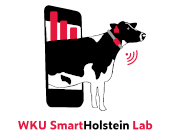|
By Dr. Tom Lawlor, Director, Research and Development, Holstein Association USA
One of the goals of the U.S. dairy industry is to
improve the basic identification system of our national herd. Although
it is believed that properly identified cattle are more valuable, little
research documents this added value. Documenting the superiority of properly
identified cattle will help promote this important aspect of good management.
In addition to encouraging breeders to keep good records,
others will be encouraged to buy identified cattle as replacements. This
study can also assist bankers by providing them with the necessary financial
information to justify appropriate lending amounts. Therefore, the goal
of this study was to quantify the direct economic superiority of properly
identified cattle.
- Lactation yield per lactation
- Net value of the milk and its components
- Milk quality and udder health of the cow measured by somatic cell score
- Expected length of productive life of the cow
Actual records were used instead of standardized records,
but additive effects of age were included in the model. The other terms
in the model were the effect of unknown sire and unknown dam. Differences
between known and unknown dams were not significant. The effect of unknown
sire was significant. Cows with identified sires produced 370 + 35 lbs
more milk, 11 + 1 lbs more fat and 10 + 1 lbs more protein.
Although we do not have any direct measure of productive
life and somatic cell score, it is reasonable to believe that the same
superiority observed for production will be seen for productive life and
somatic cell score. These differences amount to 1.8 additional months
of productive life and 0.18 lower somatic cell score. All of this adds
up to the sire identified grade cows being $166 more profitable than non
sire identified grade cows.
The net economic difference between registered cows and
sire identified grade cows is $75.70. And the difference between sire
identified grade cows and non sire identified grade cows is $166.35. Therefore,
it is expected that registered cows will net $242.05 more profit in their
lifetime than non sire identified grade cows. This is based solely on
the value of the additional milk yield and longevity. It does not include
increased marketing potential or the value of the offspring and therefore
should be considered a conservative estimate of the true economic difference
between the two groups.
|




